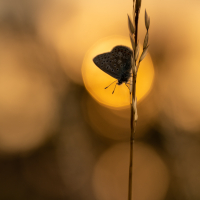
Spring into Macro
With lighter days ahead of us, now is the perfect time to delve into the fascinating world of macro photography. With new growth appearing in gardens and meadows each day, getting close and intimate with plants, flowers and insects in the landscape is a great way to improve your compositional skills overall. Compared to a typical landscape photograph, macro photography offers the opportunity to use a much shallower depth of field to create a softness and delicacy towards the subject as well as blurring out unwanted background distractions commonly found in such circumstances.
Buy second hand!
Macro photography need not be an expensive pastime either. Although new macro lenses tend to cost more to buy compared to other lens designs there is a plethora of second hand models on the market to choose from. It's also worth remembering that, if you own a mirrorless camera, you don't need to buy the same brand of lens as your camera - opening up a huge second hand market to choose from! You will, however, need to purchase a simple adaptor under such circumstances but these are not expensive and there's plenty of choice. Please refer to my previous article titled 'Unleash your mirrorless camera!' for further details about adaptors.
Sedate photography
Macro photography is a more sedate form of photography often requiring little effort to find suitable subjects. Even objects, plants and flowers around the house can all make great subjects to photograph. By their very nature macro lenses can make small objects look very large through the viewfinder and hence careful thought needs to be applied to compositions. As objects appear 'amplified' one small alteration to the composition can change the look of the overall image. This can be a litte tricky initially which is why it's important not to become frustrated whilst setting up a composition. Using a tripod is so helpful in such circumstances but this, of course, will depend on the subject your taking an image of (a butterfly may not hang around for long whilst you set up a tripod)!
Macro Photography Top 10 Tips
Here are my top 10 tips for macro photography
- If you wish to photograph a variety of subjects including insects choose a macro lens with a focal range from around 100mm. This will reduce your chances of disturbing the insect.
- Don't neccessarily try to get everything in focus within your frame. A wide aperture such as f/2.8 will create a soft, dreamy look which can be perfect for shooting subjects such as flowers.
- If you do prefer the subject to be fully in focus consider focus-stacking your images. This technique is preffered when you wish to keep certain objects within the frame tack sharp but still want other areas to blur out (and is often better than using a smaller aperture).
- Be careful to check for any distracting elements within the composition as this can upstage the main subject.
- Altering the aperture can produce smaller or larger size bokeh in the blurry areas, so use this function creatively!
- Use a black umbrella to act as a parasol when exposed to harsh, direct light. Other colours may create colour-casts on the image.
- Consider investing in a Wimberley Plamp, which delicately holds the subject still whilst taking the picture (such as flower stems)
- Consider using a tripod so you can set up the composition carefully and be sure to check around the perimiter of the frame for any unecessary intrusions before taking the picture.
- Using a small cushion or Gorillapod is an ideal way of shooting very close to the ground if your normal tripod cannot get that low.
- Macro photography often means being knelt down so consider using a purpose made mat or cusion to kneel on. Quite often I photograph in the sniper position, so I always take a bin bag to lie on.
Improve your macro skills
If you find macro photography challenging don't forget that I offer personalised 1-2-1 tuition as well as a number of residential workshops throughout the year on this very subject. Please check my workshops page for my current offerings here >>.
Spring/Summer Macro Examples









